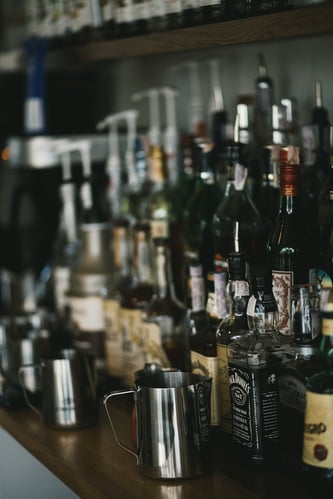Learn how to increase your bar profits and boost your bottom line with these expert tips and strategies.
 Developing a Profitable Drink Menu
Developing a Profitable Drink Menu
One of the key ways to maximize your bar profits is by developing a profitable drink menu. This involves carefully selecting the drinks you offer and pricing them in a way that ensures a good profit margin. Consider the popularity of different types of drinks and the cost of ingredients when creating your menu. Offering a variety of options, including signature cocktails, craft beers, and unique spirits, can attract a wider range of customers and increase sales.
Additionally, regularly reviewing and updating your drink menu based on customer feedback and trends in the industry can help keep your offerings fresh and exciting. Experiment with seasonal specials and limited-time promotions to create a sense of urgency and drive sales.
Implementing Cost-Effective Inventory Management
Another important aspect of maximizing bar profits is implementing cost-effective inventory management. Efficiently managing your liquor inventory can help reduce waste, prevent theft, and ensure that you always have the necessary ingredients on hand to serve customers.
Consider investing in a system like Scannabar, which uses technology to track and monitor your inventory in real-time. This can help you identify trends, optimize your ordering process, and minimize the risk of overstocking or running out of popular items. Regularly conducting physical inventory counts and reconciling them with your system's data can also help identify any discrepancies and ensure accuracy.
In addition, analyzing sales data and trends can help you make informed decisions about which products to stock and which ones to discontinue. By focusing on high-profit items and eliminating low-performing ones, you can maximize your bar profits.
Enhancing Customer Experience to Drive Sales
Creating a positive and memorable customer experience is essential for driving sales and maximizing bar profits. Start by ensuring that your bar is well-designed and comfortable, with appropriate seating and lighting. Consider adding unique features or decor elements that make your bar stand out from the competition.
Providing excellent customer service is also crucial. Train your staff to be knowledgeable about your drink offerings and to provide friendly and efficient service. Encourage them to upsell by suggesting additional items or promotions to customers. Offering personalized recommendations based on customer preferences can also enhance the overall experience and increase customer satisfaction.
Furthermore, consider hosting events or theme nights to attract more customers and create a buzz around your bar. Collaborating with local artists or musicians can help create a vibrant and lively atmosphere. Offering promotions and happy hour specials during off-peak times can also entice customers to visit your bar during slower periods.
Utilizing Marketing Strategies to Increase Foot Traffic
Marketing plays a crucial role in increasing foot traffic to your bar and maximizing profits. Utilize various marketing channels to promote your bar and attract new customers. Establish a strong online presence by creating a professional website and maintaining active social media profiles.
Regularly post engaging content, such as photos of your drinks and events, customer testimonials, and updates on promotions or specials. Consider partnering with local influencers or bloggers to reach a wider audience. Offer online reservations or the option to order drinks for pickup or delivery to cater to different customer preferences.
In addition to online marketing, traditional marketing methods can still be effective. Distribute flyers or brochures in the local area, advertise in local newspapers or magazines, and collaborate with other businesses to cross-promote each other. Utilize signage and outdoor advertising to attract attention and create awareness of your bar's offerings and events.
Training Staff for Efficiency and Upselling Opportunities
Your staff plays a crucial role in maximizing bar profits. Ensure that your team is well-trained and equipped with the necessary skills to provide efficient and friendly service. Train them on proper drink preparation techniques, including measuring ingredients accurately and creating visually appealing presentations.
Encourage your staff to upsell by offering suggestions and recommendations to customers. Provide them with product knowledge and information about any promotions or specials, so they can confidently communicate these to customers. Consider implementing a rewards program or incentive system to motivate and reward staff for their upselling efforts.
Efficiency is also key to maximizing profits. Train your staff on time-saving techniques and workflows, such as organizing the bar area for easy access to ingredients and tools, and using technology like Scannabar to streamline the ordering and payment process. By improving efficiency, you can serve more customers in less time and increase overall sales.

 In this crucial chapter, we delve into the financial and operational aspects of running a successful bar. Managing your finances efficiently and streamlining operations are key to maximizing profits and providing top-notch service to your valued customers.
In this crucial chapter, we delve into the financial and operational aspects of running a successful bar. Managing your finances efficiently and streamlining operations are key to maximizing profits and providing top-notch service to your valued customers. Chapter 3: Location, Location, Location
Chapter 3: Location, Location, Location
